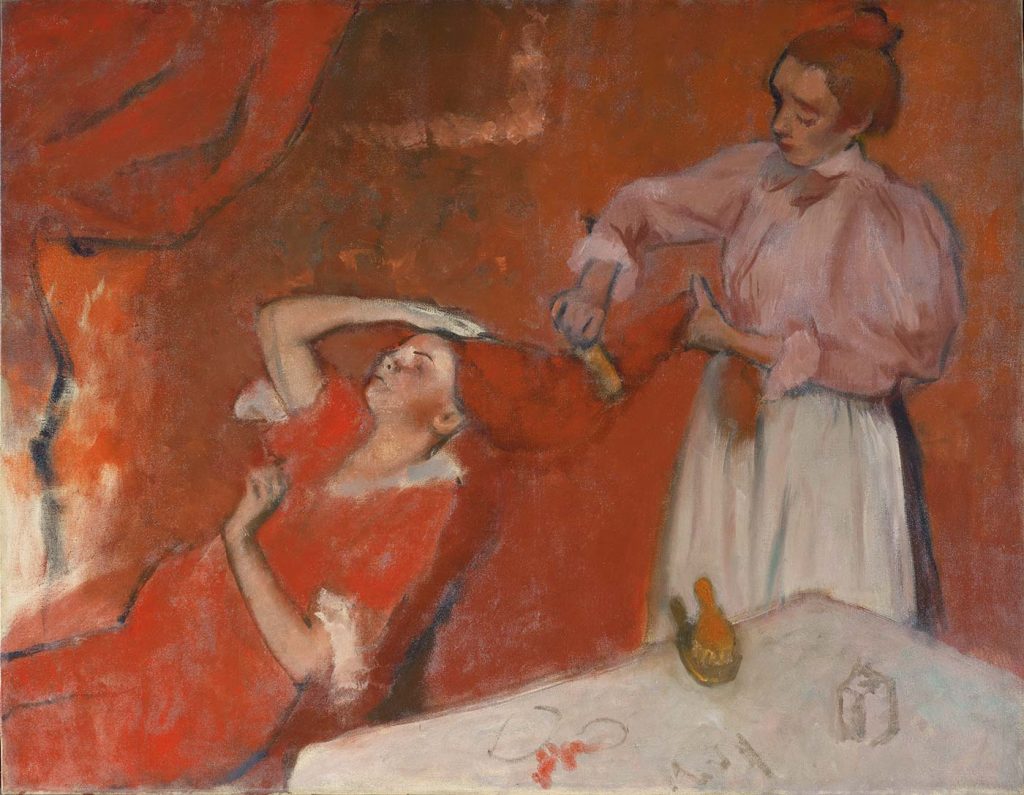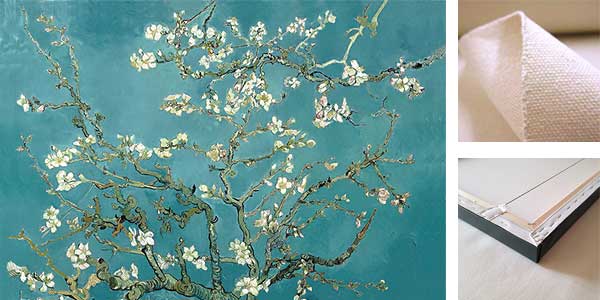
Combing the Hair (‘La Coiffure’) by Edgar Degas was created in 1896. The painting is in National Gallery, London. The size of the work is 114,3 x 146,7 cm and is made of oil on canvas.
About the Work
Women combing their hair, or having it combed, often appear in Degas’s work – for example, in his early Beach Scene, also in the National Gallery. This late painting is one of his boldest treatments of the subject.
Here, a maid, wearing her servant’s uniform, combs the hair of her seated mistress, who is not yet fully dressed and who may also be pregnant. Pulled back by the force of the strokes, the mistress raises her right hand to her head as if in pain, or perhaps just to steady herself or hold her hair in place.
Degas may originally have used his own maid, Zoé Closier, who he also photographed, as a model for the maid in his preparatory drawings. However, he replaced her with the woman we see here who, like the mistress, was most likely a professional model. Degas’s choice of this subject in part reflects his interest in Japanese woodblock prints, which he collected, as they often show women engaged in everyday domestic activities. But a more immediate precedent was Ingres’s The Turkish Bath (1862–3, Louvre, Paris), in which a seated woman, seen in profile, has her hair plaited by another who stands behind her. A keen admirer of Ingres, Degas was very familiar with this painting, and defended it against its critics. Read more in National Gallery London
About the Artist
Edgar Degas (19 July 1834 – 27 September 1917) was a French Impressionist artist famous for his pastel drawings and oil paintings.
Degas also produced bronze sculptures, prints, and drawings. Degas is especially identified with the subject of dance; more than half of his works depict dancers. Although Degas is regarded as one of the founders of Impressionism, he rejected the term, preferring to be called a realist, and did not paint outdoors as many Impressionists did.
Degas was a superb draftsman, and particularly masterly in depicting movement, as can be seen in his rendition of dancers and bathing female nudes. In addition to ballet dancers and bathing women, Degas painted racehorses and racing jockeys, as well as portraits. His portraits are notable for their psychological complexity and their portrayal of human isolation. Read more in Wikipedia
Order a reproduction of this work (printed on canvas)
